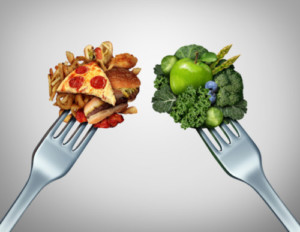You’ve probably heard it before; you can’t and will never out train a bad diet. Nutrition is one of the most important aspects of a healthy and balanced lifestyle, yet so many people have no clue where to start. Why would they? There is so much conflicting research and advice out there that it’s like trying to tell the difference between Marie-Kate and Ashley. So where do you start?
To begin with, if you haven’t read the previous post about the North American diet, I would suggest you read it as it sums up why the North American diet is sub-par for our health. Secondly, knowing basic nutritional science should be on everyone’s priority list as it gives us the knowledge to understand how our body utilizes different foods. In the end, it helps us make informed decisions on what to eat and when to eat it.
The fundamentals of nutritional science start with macronutrients. Every food is made up of macronutrients. They are the essential nutrients the human body needs to survive and they significantly influence our energy levels, our performance and recovery, as well as our body composition.
There are three macronutrients: proteins, carbohydrates and fats. Yes, I know, you’re probably thinking this is a joke, right? Does this guy actually think we don’t know what proteins, carbohydrates or fats are? Well to be honest, those were my initial thoughts until I started asking this question during nutritional counselling sessions with clients. To my surprise, I’ve had an alarming number of clients who couldn’t tell me what a protein, carbohydrate or fat was. On the other hand, some clients were able to name me a few macronutrients but failed to understand how they are used in the body or when to eat them. How can you expect someone to make a proper nutritional decision when they don’t even know what they are putting in their mouth? Self-reflect for a minute and tell me if you were to pick something out of your lunch box, would you be able to identify which macronutrients it is comprised of?
Well, if you couldn’t figure out the type of food you’re eating for lunch, you’re not alone. The upcoming articles in the “Nutrition 101 series” will breakdown each macronutrient explaining why they are important and which ones you should eat. After that, I’ll explain nutrient timing and reflect on when you should eat certain foods based on your body’s physiology. Finally, the last article will examine hydration and why it is so important for health and performance.
However, if you feel confident in your nutritional knowledge and already know this stuff, then please help me out and spread the knowledge! The more people we can educate about proper nutrition, the closer we’ll get to control this obesity epidemic!
So stay tuned for next week’s article which will officially kick start the “Nutrition 101 series”.
Cheers,
Paul Bissonnette B. Kin, CEP, CSCS, FMSC, Pn1
References
- Baechle, T. R., Earle, R. W., & National Strength & Conditioning Association (U.S.). (2000). Essentials of strength training and conditioning. Champaign, IL: Human Kinetics.
- Berardi, J., & Andrews, R. (2015). The Essentials of Sport and Exercise Nutrition Certification Manual (Second ed.). Precision Nutrition Inc.
- McArdle, W., Katch, F., & Katch, V. (2010). Exercise Physiology: Nutrition, Energy, and Human Performance (7 ed.). Philadelphia: Wolters Kluwer: Lippincott Williams & Wilkins.







